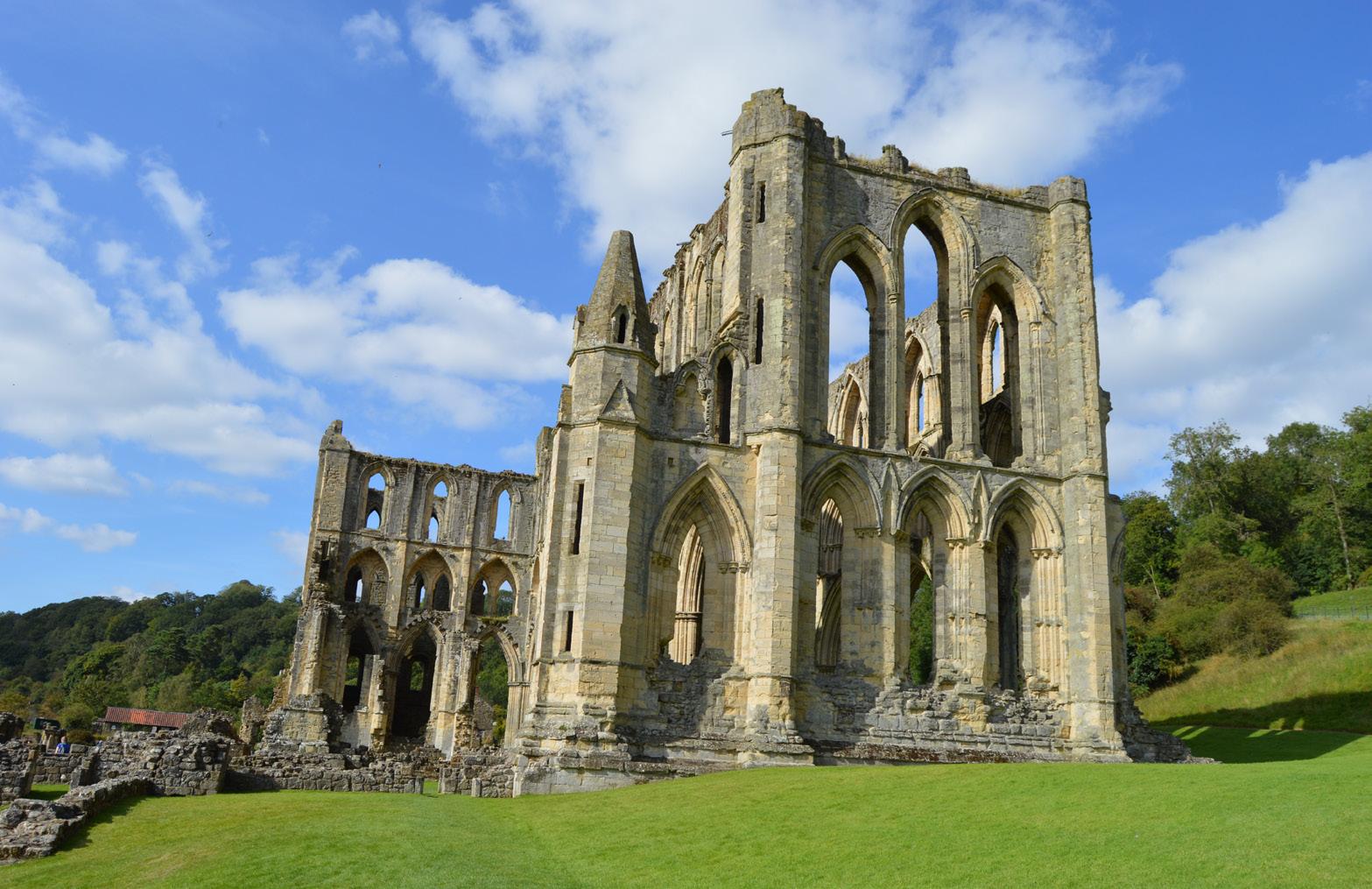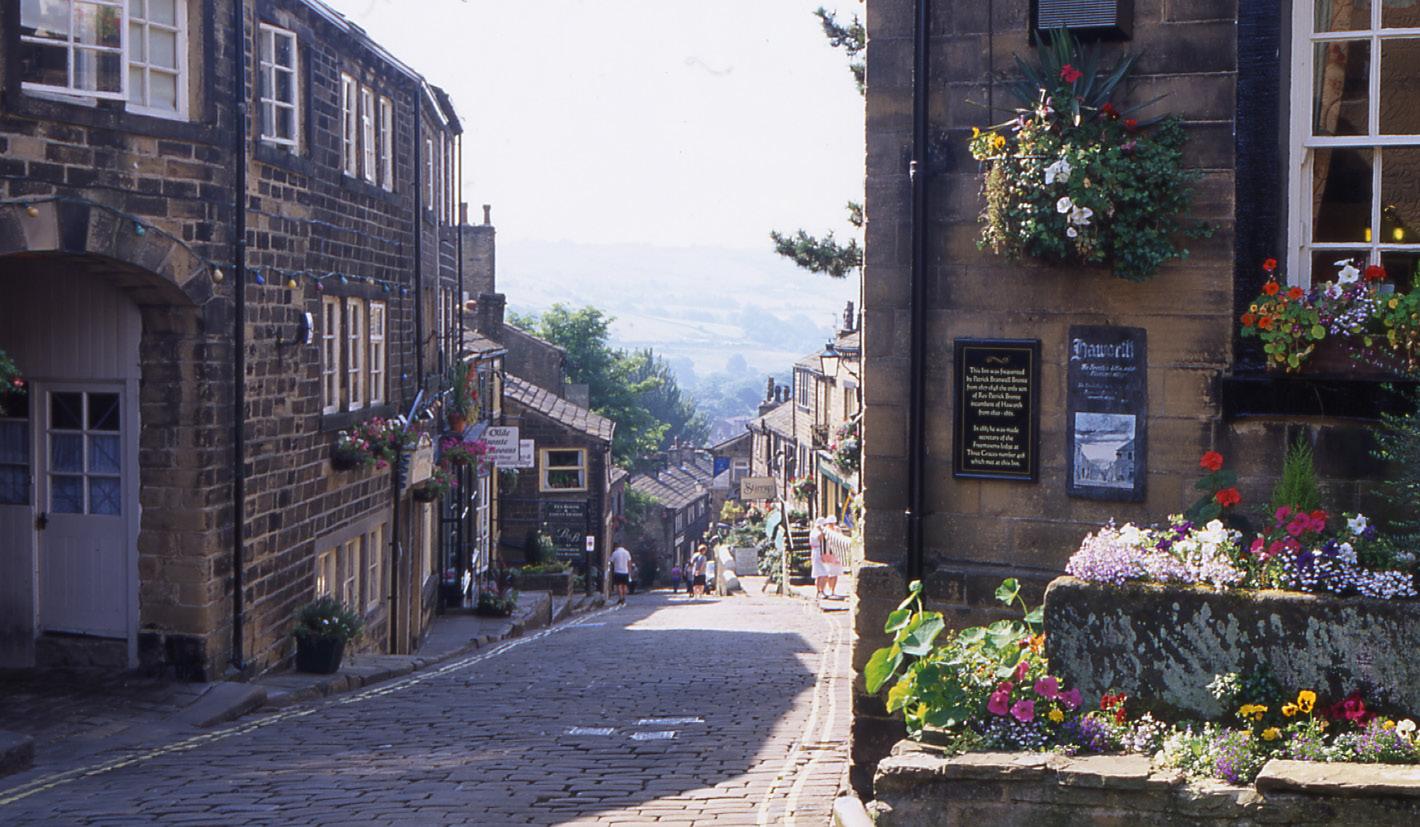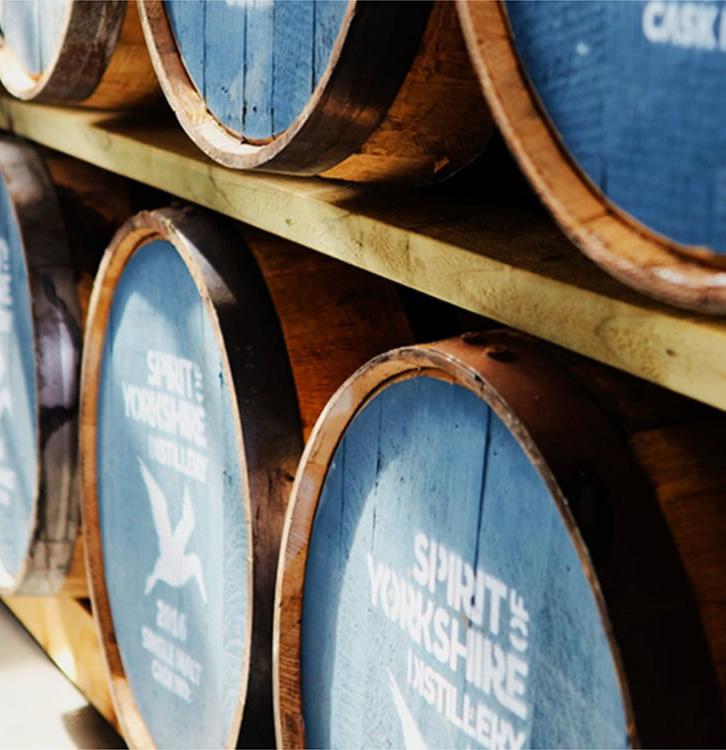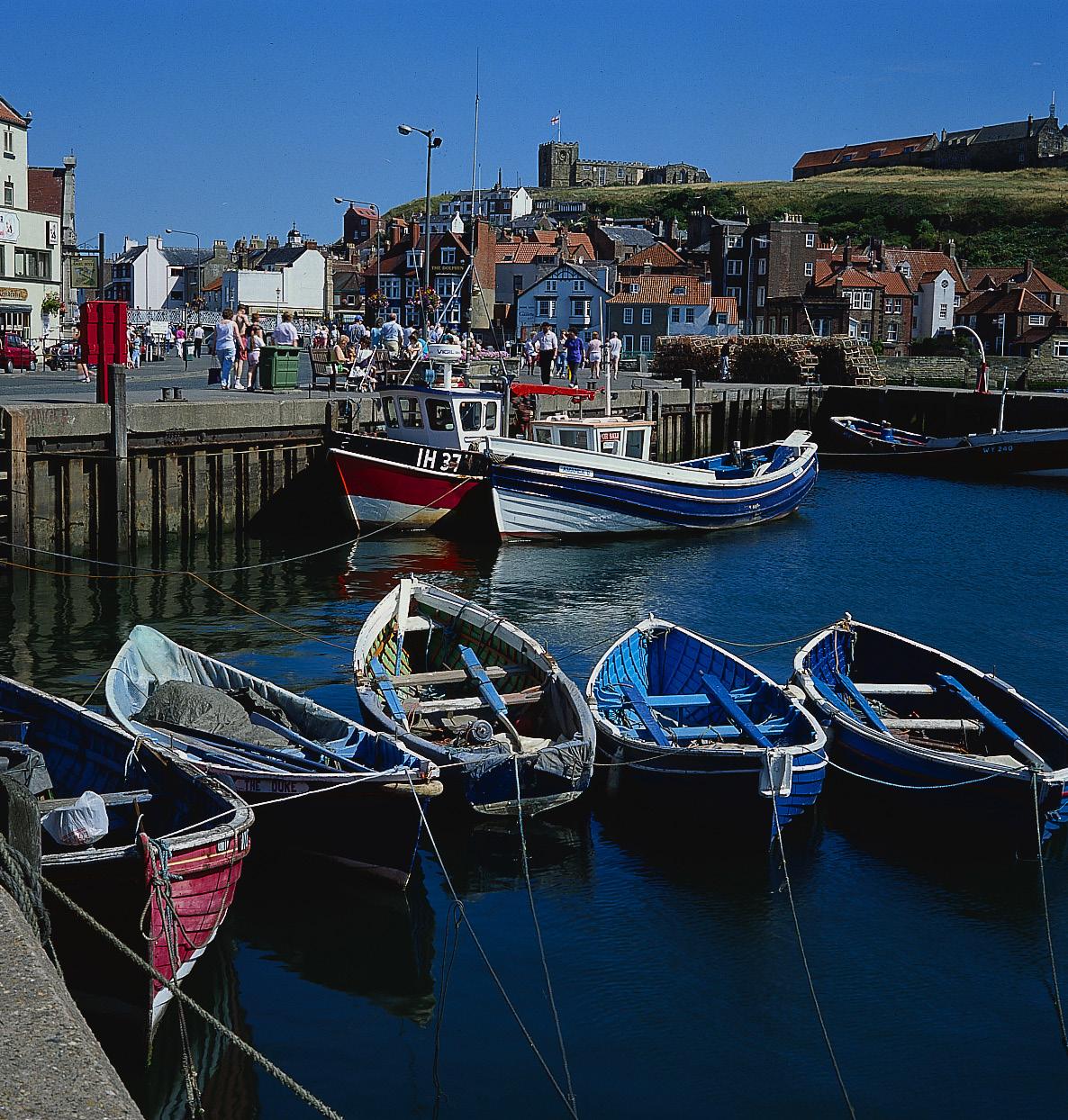
10 minute read
TOP TEN PLACES TO VISIT IN YORKSHIRE
Britain is a long country, running over 700 miles on its north-south axis. This means that our greatest national variations are not found between towns on the east and west coasts but between the north and south.
Half way up the country, and closer to Scotland than London, stands Yorkshire, solid and sturdy, and the biggest county in England. Historically Yorkshire was so far from the king in London that it had its own autonomous archbishop since before the Norman Conquest. In the Middle Ages the dukes of York were so powerful they seized the English throne from time to time.
Today Yorkshire remains proud of its sense of difference. It has produced many great writers including the Brontë sisters, Ted Hughes and even Alan Bennett. In the visual arts it was the birthplace home of Barbara Hepworth, Henry Moore and of David Hockney, whose work still celebrates his native Saltaire in West Yorkshire. Moreover the British music hall and BBC television would have run out of comedians years ago if it weren’t for the dry humour of Yorkshire. So here is our guide to the Top Ten places to visit in Yorkshire in 2021 and if this whets your appetite there are many more for you to discover on a second visit in the years to come.
1 BEST ABBEY
RIEVAULX

Rievaulx Abbey is the perfect choice for a peaceful day out, with its extensive ruins and fascinating museum in a secluded North York Moors valley
Because of its remote moorland Yorkshire was often chosen as a place for religious retreats. Rievaulx Abbey was founded in the early twelfth century by Cistercian monks from France. It occupies a romantic wooded valley deep in the North York Moors. St Aelred, one of the first abbots of Rievaulx, wrote of the location 'everywhere peace, everywhere serenity'. Under Aelred the abbey grew to great wealth thanks to the enterprise of its 140 monks and 500 lay brothers. This religious community farmed, brewed, traded and even set up an early blast furnace on the site. When Henry VIII 1 dissolved the monasteries in 1538 Rievaulx fell into disrepair, but in the eighteenth century its beautiful remains became a place of inspiration for artists. In the 1750s local land-owner, Thomas Duncombe MP built a terrace along the valley top from which the abbey ruins can be still be admired today. The soaring Gothic arches of Rievaulx’s choir -mercifully intact - continue to inspire visitors and there is also a new café and museum on the site. → english-heritage.org.uk
2 BEST TEA ROOM
BETTYS


Young woman looking at the window of Betty's Cafe Tea Rooms, York
©VISITBRITAIN/ASHLIEGH WICK
Bettys occupies a prominent position in Helen's Square, York and on the corner of Parliament Street and Montpellier Parade in Harrogate. It also occupies a special place in the heart of Yorkshire people. This small chain of elegant cafes was begun in 1919 by a Swiss confectioner called Frederic Belmont who arrived in Harrogate speaking very little English. At the time this spa-town was a goldmine thanks to wealthy visitors seeking to drink it restorative waters. (To modern sensibilities the sulphurous waters of Harrogate are far too pungent to support a tourism industry!). Belmont’s business prospered, later merging with the famous coffee-makers, Taylors of Harrogate. Today there are six Bettys across Yorkshire and the company is still owned by Frederic Belmont’s descendants. The Lady Betty Afternoon Tea presented on a three-tier cake stand is the signature dish of these tea rooms but also popular are Bettys Champagne Truffles, Yorkshire “Fat Rascal” Scones, Lemon and Lime Cake and the Bettys Bread Box. → bettysandtaylors.co.uk
3 BEST TRAIL
THE LYKE WAKE WALK

Two people walking in the North Yorkshire landscape
This 40-mile crossing of the remote North York Moors starts near Osmotherley and finishes near Ravenscar on the East Sea coast. It is possible to do the entire route on heather, hardly ever stepping onto a roadway. Although the walk was only designated in 1955, it took its name from the old Scandinavian word for a corpse (Lyke) because when the Vikings ruled Yorkshire the people who inhabited this area would carry their dead across these moors to their ancestral burial grounds. There is a powerful ancient hymn (set by Benjamin Britten, amongst others) called The Lyke-Wake Dirge which conjures up the terrors of crossing these moors by night.
When farmer/broadcaster Bill Cowley created the Lyke Wake Challenge in 1955 he proposed that all 40 miles be completed in 24 hours. Undertaking the route today in a less spartan manner, the Lyke Wake Walk offers the chance to see a landscape crossed by few other travellers and no signs of modern development. It feels like stepping into history. → lykewakewalk.co.uk
4 BEST CITY
YORK

The Shambles is an old street in York, England, with overhanging timber-framed buildings, some dating back as far as the fourteenth century.

The centre of York, surrounded by walls whose foundations date back to medieval times. There is a wall walk around the city. York Minster at sunset.
York is one of the most beautiful cities in Britain. Its encircling medieval walls remain almost complete and where they had to be blasted apart to let the railways in, it has one of the most graceful late nineteenth-century train stations. When, opened in 1877 this was the biggest station in the world with 13 broad platforms. In the twentieth century the station’s interior featured in the Harry Potter films as part of King Cross. Another Potter connection is the medieval shopping street known as “Shambles”. Its overhanging upper floors were the inspiration for the design of Diagon Alley. York has a history of occupation going back to Roman and Viking times but its absolute glory is York Minster, a sublime construction from the fourteenth and fifteenth-centuries whose east window is the largest stained glass in Britain. → visityork.org
5 BEST SEASIDE RESORT
SCARBOROUGH

“Scarborough Spa” became Britain’s first seaside resort after a stream of acidic water was discovered running down one the cliffs above its port in the seventeenth century. In those days such waters were considered good for one’s health and by 1735 Britain’s first bathing machines were being rolled out into the sea from Scarborough’s beaches.
In the nineteenth century many hotels were constructed on top of Scarborough’s cliffs including The Crown, which was Yorkshire’s first purpose-built resort hotel and The Grand, which was the biggest hotel in Europe when it opened in 1867. Both still welcome guests today. The town also has a number of Georgian structures built for visitors including the Rotunda Museum, the Cliff Bridge, and Scarborough Pier Lighthouse. Its church contains works by the Pre-Raphaelite artists Rossetti, Burne-Jones, William Morris and Ford Madox Brown.
Another famous name associated with this fashionable resort was the novelist Anne Brontë who in 1849 died in a clifftop boarding house where the Grand Hotel stands today. Ironically she had come to Scarborough to try and recover her health. → visitscarborough.com
6 BEST HOTEL
MIDDLETHORPE HALL & SPA

Middlethorpe Hall is one of the National Trust’s Yorkshire gems, a sublime example of William and Mary architecture. It was constructed in expensive red brick in 1699 for Thomas Barlow, a wealthy Sheffield industrialist.Thomas sited it close to the main road into York so no one could fail to notice his wealth. When the Barlow family went on the Grand Tour in 1712 they let their house to Lady Mary Wortley Montagu, who had just eloped with her new husband Edward. He was soon appointed the British ambassador to Constantinople and after their departure she went on to be an eminent Georgian woman of letters.
Today the house and its chequered marble floors are furnished with eighteenth-century antiques and – delightfully – it doubles as a hotel run by the Historic House Hotels group. There are ten bedrooms in the house itself, 16 in the adjoining eighteenth-century stable block courtyard and three cottages in the grounds. The hotel’s wood-panelled Oak Room is one of the most glamorous restaurants in the York area. → middlethorpe.com
7 BEST TOWN
RICHMOND

© BRITAINONVIEW/GETTY IMAGES/ISTOCKPHOTO
James Herriot, author of All Creatures Great & Small told the story of a man from Richmond going to heaven only to be told by St Peter that he might find his new home a bit disappointing.
The market town of Richmond at the foot of Swaledale is truly gorgeous and full of elegant Georgian houses that teeter down steep wynds (streets) towards the river Swale. It’s dominated by the 100-foot keep of a huge Norman castle that was completed here in 1086. Scolland’s Hall, a residential building within the castle complex is one of the oldest buildings in England and the castle’s outer bailey is now the town’s market place. Today Richmond has a working cinema in its old railway station and a tiny Theatre Royal which dates back to 1788 and has recently been restored to its original Georgian colour scheme.
Not surprisingly Richmond is also a popular base from which to explore the Yorkshire Dales National Park of Swaledale, Wharfedale and Wensleydale. → richmond.org/guide
8 BEST LITERARY PILGRIMAGE
HAWORTH

The Brontë Sisters lived and wrote most of their novels in the parsonage at Haworth, West Yorkshire. This interior of this building has been meticulously restored to how it looked when these three remarkable young women were publishing novels like Jane Eyre, Wuthering Heights and The Tenant of Wildfell Hall. Today the village is extremely picturesque and it’s difficult to believe that in the Brontës’ time it was one of the most polluted places in Britain – one of the reasons the sisters died so young.
The Church of St Michael and All Angels, where Rev Brontë preached, still broods over High Street and the Black Bull, where his wayward son, Branwell drank away his talent, still stands nearby on Main Street. You can also see the Old School Room where the sisters taught and the Apothecary Shop where Branwell bought his opium. → bronte.org.uk
9 BEST DISTILLERY
SPIRIT OF YORKSHIRE

Located in the village of Hunmanby, Spirit of Yorkshire is the county’s first whisky distillery. It produces a range of “Filey Bay” single malts whose label features a gannet for the simple reason that Britain’s biggest gannet sanctuary lies on the coast nearby.
All the barley used in the distillation process here is grown on the farm of Tom Mellor, co-founder of Spirit of Yorkshire. The water, a crucial ingredient in any successful whisky, comes from a borehole on the farm that is sunk deep into chalky soil. The company even bottles on-site, allowing them to assert that the whole whisky process “from field to bottle” happens here in Hunmanby.
One-hour distillery tours cost £12.50. There is also a longer brewery and distillery tour (£22) as Tom and his wife Gill also set up the nearby Wold Top Brewery. →spiritofyorkshire.com For more inspiration on visiting Yorkshire take a look at the Welcome to Yorkshire website: → yorkshire.com
10 BEST PORT
WHITBY

Anyone who has read Dracula will know that the Transylvanian vampire arrived in Britain via the port of Whitby. It’s a suitably dramatic town with a ruined cliff-top abbey that has been home to several saints, with narrow streets of red pan-tiled houses below and a memorial to Captain James Cook which gazes romantically out to sea. Cook learned seamanship in Whitby where the harbour was always full of whaling ships, colliers and the herring fleet that contributed massively to the town’s prosperity. Fishing, supported by tourism, is still a mainstay of Whitby's economy and its harbour is sheltered by two Grade II listed piers, both with working lighthouses. The west lighthouse (1831) is 84 feet high and has a foghorn that sounds a blast every 30 seconds during reduced visibility at sea. This is a working harbour designed to protect fishermen whose lives depend on the often stormy North Sea. → visitwhitby.com
Words | Adrian Mourby








